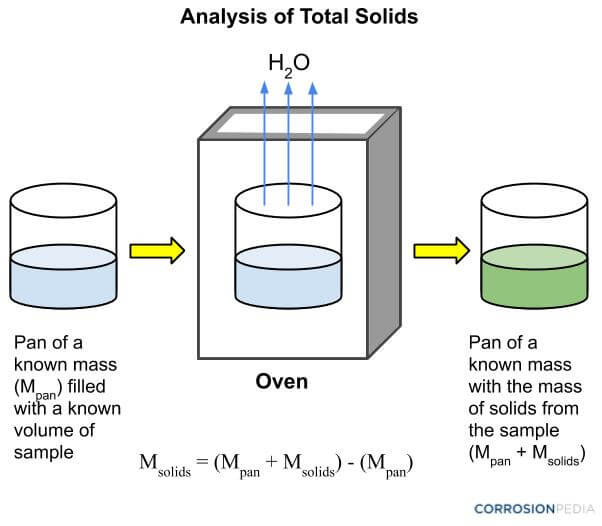What Does
Total Solids Mean?
Total solids (TS) are a measurement often used in the water treatment industry that includes the combination of total dissolved solids and total suspended solids in a liquid. Total solids are composed of all the suspended, colloidal and dissolved solids in the sample. This mixture includes any dissolved salts such as sodium chloride (NaCl) and solid particles such as silt and plankton.
A high total solids level indicates that there is a high level of solid material in the liquid sample. Depending on the evaluation criteria, a high level of total solids could cause the sample to be considered contaminated.
Excess total solids in rivers and streams are a widespread problem. Many factors contribute to the total solids in water, with soil erosion being a major contributor. An increase in the water flow rate or a decrease in stream bank vegetation can speed up the process of soil erosion, thus contributing to the levels of suspended particles such as clay and silt.
Naturally occurring minerals or rocks in the soil, such as halite, NaCl, CaCO3 or limestone sometimes dissolve into the water, adding to the total solids.
Corrosionpedia Explains Total Solids
Total solids are a combination of two different measurements:
- Total dissolved solids are a measurement of the amount of solid material that has gone into solution in a liquid sample. Potassium, sodium and magnesium are examples of these types of solids. These solids cannot be filtered out. The liquid may be evaporated to determine the level of total dissolved solids.
- Total suspended solids are a measurement of the solids in liquid than are not dissolved. Depending on the size of the solids, they can be collected by devices such as filters. Inorganic sediment and microbes are examples of these types of solids.
Having some amount of total solids in a water sample is not necessarily detrimental to water quality or the organisms that depend on it. Excellent water quality often includes a good balance somewhere between too low a level and too high a level of total solids. The right kinds of solids also need to be present to ensure good water quality.
Dissolved solids contribute to the quantity of total solids in water. In some cases, the mass of the dissolved solids can be higher than the mass of the suspended particles. The total solids level impacts the health of the water source and the organisms that live there. High levels of total solids reduce the water’s clarity, which then decreases the amount of sunlight that can penetrate the water and ultimately decreases the rate of photosynthesis. Reduced clarity also makes the water aesthetically unappealing. While a high total solids level may not be directly harmful, it may be undesirable for many uses.
Determining the Level of Total Solids
Common laboratory procedures such as gravimetric determination are available to determine the amount of total solids in a sample.

Figure 1. Procedure to determine the quantity of total solids in a water sample.
Total Solids Can Cause Corrosion
Some solids can cause rapid corrosion in process vessels and pipelines. Water treatment processes should be put into place to avoid the corrosion that can occur from electrolytic water or water with microbes that can induce corrosion.
Sources of Total Solids
In addition to the total solids that are found in ground water, total solids also come from agricultural runoff that often contains fertilizers and suspended soil particles. Some other sources include industrial wastes, byproducts of water treatment plants, and runoff from parking lots and rooftops. Aquatic organisms also sometimes contribute to the total solids in the water by stirring up sediment on the bottom of lakes and streams. Decaying plant and animal matter along with other organic material suspended in the water also add to the total solids.